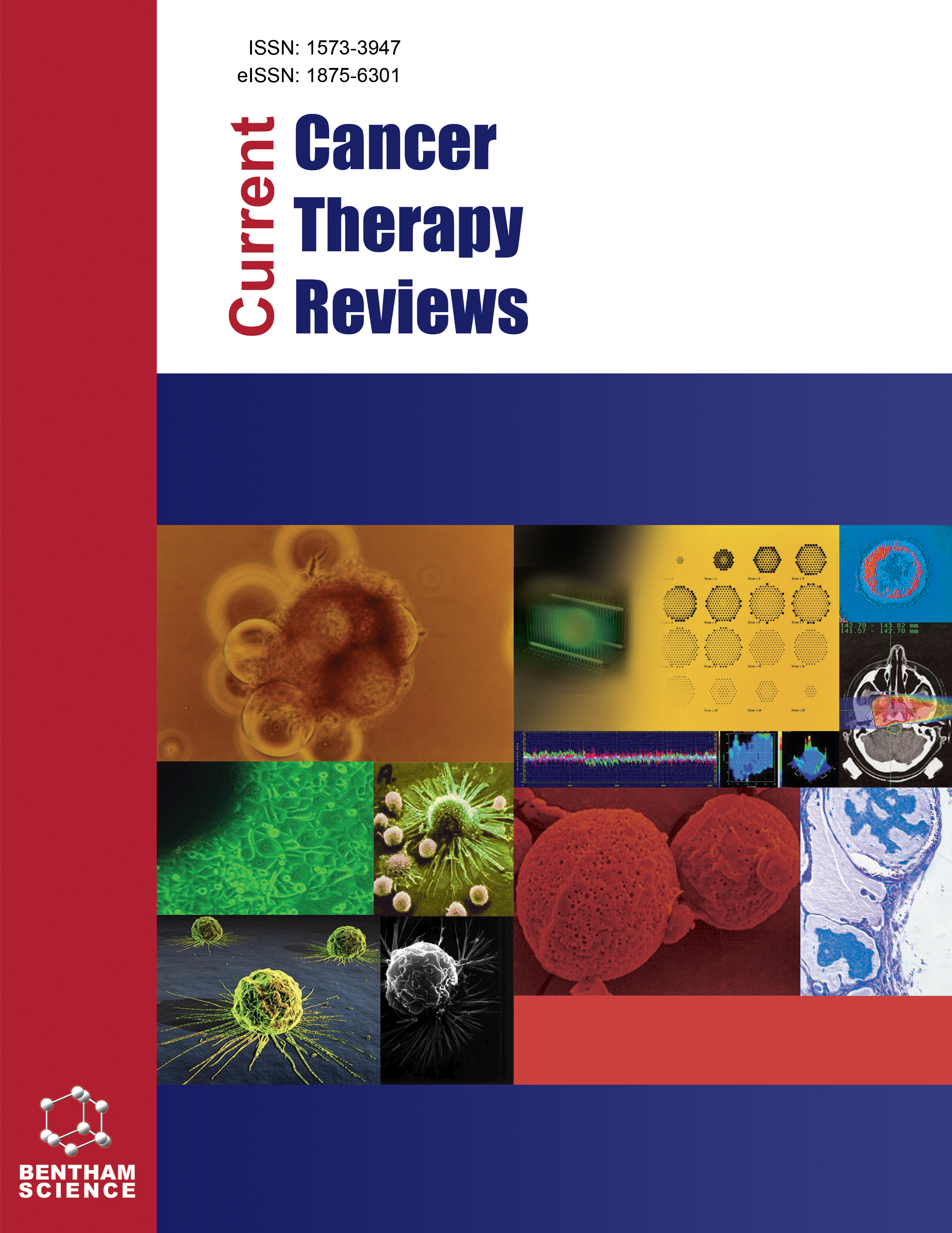- Home
- A-Z Publications
- Current Cancer Therapy Reviews
- Previous Issues
- Volume 19, Issue 1, 2023
Current Cancer Therapy Reviews - Volume 19, Issue 1, 2023
Volume 19, Issue 1, 2023
-
-
Recent Updates on Folate Targeted Drug Delivery Systems in Cancer: A Mini Review
More LessAuthors: Deepika Sharma, Manu Sharma and Gopal S. BishtTargeted drug delivery systems that selectively deliver anticancer drugs to tumour cells have always been a field of interest in reducing side effects associated with chemotherapy in cancer patients. Cancer cells require nutrients for their multiplication; folic acid is one such nutrient. The expression of folate receptors is negligible in normal cells, whereas they are overexpressed in a variety of cancer cells. A number of stu Read More
-
-
-
Clinical Progress in Gold Nanoparticle (GNP)-mediated Photothermal Cancer Therapy
More LessThe field of oncotherapy has always been looking out for alternative treatment methods that have much lesser side effects compared to the currently used therapies that lower the patients’ quality of life. Gold Nanoparticle (GNP)-mediated photothermal therapies are proving to be a boon as they are both non-invasive and tumour-specific. This review analyses how GNPs can help right from the beginning, that is, the diagno Read More
-
-
-
Gastric Cancer: A Review of Risk Factors and New Insights into Treatment
More LessAuthors: Saleh Azadbakht, Parastoo Baharvand, Mojgan Saki and Alireza MoayyedkazemiGastric cancer (GC) is one of the most frequent cancers in the world, which is ranked the fourth most prevalent cancer and the second leading cause of cancer death. GC is often diagnosed at a progressive phase when the majority of patients are ineligible for remedial therapies in this stage. In addition, the existing systemic chemotherapy exhibits low efficiency and minimum survival benefits. Nowadays, GC therapy is Read More
-
-
-
Mathematical Oncology to Cancer Systems Medicine: Translation from Academic Pursuit to Individualized Therapy with MORA
More LessAim & Objective: This article aims at understanding the gradual development of cancer systems medicine and how it provides a better therapeutic strategy (in terms of drug selection, dose and duration) and, thus, improves patients' care. Hence, this study focuses on understanding the need and the evolving nature of the analytical models for assessing the outcome of different cancer therapeutics. Background: At present, ca Read More
-
-
-
Phytochemical Screening and Biological Potential of Agave angustifolia Haw. Leaves Extract as Antioxidant and Anticancer Agents
More LessIntroduction: Agave angustifolia Haw. is a commercial crop grown in the highlands of Oaxaca State (Southern Mexico), a semi-arid region that belongs to the Agavaceae family, and it contains a variety of bioactive compounds that are linked to various biological activities. Methods: The purpose of this study was to assess the antioxidant and anticancer potential of Agave angustifolia extract (AAE). AAE contained phenolic Read More
-
-
-
The Value of Thioredoxin Level and its Gene Polymorphism in the Diagnosis of Post- HCV Hepatocellular Carcinoma
More LessBackground: Hepatocellular carcinoma (HCC) is one of the most common malignancies and a leading cause of cancer-related death worldwide. Indeed, we need a novel tumor marker other than AFP for early detection and to improve the outcome. Serum thioredoxin is a promising protein involved in the pathogenesis of many malignancies. The study aims to evaluate serum thioredoxin and its gene polymorphism in HCC in Read More
-
-
-
The Effect of Metformin on Bad, Bak, and Bim Pro-apoptotic Factors: A Molecular Dynamic Simulation Study
More LessBackground: Recent investigations have demonstrated that metformin treatment can decrease tumor incidence and growth using cell cycle arrest and induction of apoptosis pathway. However, it is not clear how metformin affects the factors involved in the apoptotic process. Objective: The present study aimed to determine the effect of metformin on Bak, Bad, and Bim proapoptotic proteins using docking and dynamics simu Read More
-
Volumes & issues
-
Volume 21 (2025)
-
Volume 20 (2024)
-
Volume 19 (2023)
-
Volume 18 (2022)
-
Volume 17 (2021)
-
Volume 16 (2020)
-
Volume 15 (2019)
-
Volume 14 (2018)
-
Volume 13 (2017)
-
Volume 12 (2016)
-
Volume 11 (2015)
-
Volume 10 (2014)
-
Volume 9 (2013)
-
Volume 8 (2012)
-
Volume 7 (2011)
-
Volume 6 (2010)
-
Volume 5 (2009)
-
Volume 4 (2008)
-
Volume 3 (2007)
-
Volume 2 (2006)
-
Volume 1 (2005)
Most Read This Month
Article
content/journals/cctr
Journal
10
5
false
en


